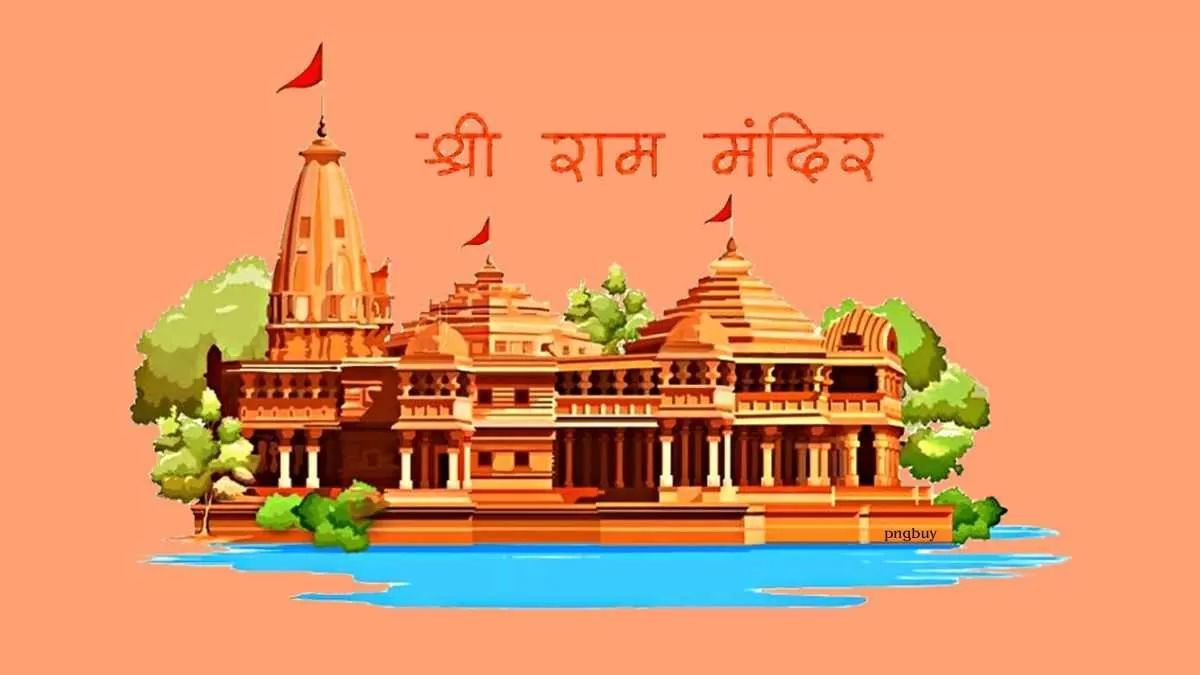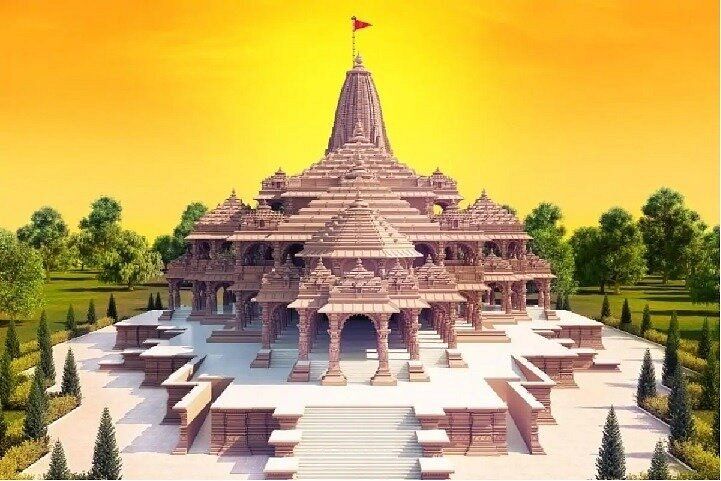The Ram Temple in Ayodhya's Grand Opening is revealed: 2024 is a date with destiny!
Introduction
The Grand Opening of the Ram Mandir is set to open to devotees on January 24, 2024. It will be a historic occasion as Prime Minister of India, Shri Narendra Modi, will preside over the inaugural ceremony.
Journey through the rich history and present of the Ayodhya Ram Temple, a symbol of faith, power, and aspirations. The city, located near the Sarayu River, has been a witness to centuries of devotion, conflicts, and resolutions. Recently, Yogi Adityanath, the Chief Minister of Uttar Pradesh, announced that the new Ram Temple is nearing completion with more than 90 percent of the construction already done, marking a significant moment in the story. The Ram Temple in Ayodhya represents not just a physical structure but a living testament to the changing identity of a nation, with legends and historical controversies associated with the site.

The Dawn of the Ram Mandir Movement in India
The Ram Mandir movement originated in the heart of India and began as a small expression of faith, eventually growing into a large collective aspiration after 1949. For centuries, the narrative of the Ram Mandir has been intertwined with the mythical birthplace of Lord Ram and has been a focal point of Hindu devotion. The 20th century saw the transformation of this religious sentiment into a mass movement.
Disputes over the Ram Mandir date back to the 19th century, with the first police complaint recorded in Ayodhya in 1858. The situation escalated in 1885 with the filing of the first legal case. However, it was in the years following India's independence that the Ram Mandir movement gained significant momentum, linking religion with emerging political ideologies.
During this period, the Ram Mandir movement represented more than just a religious crusade. Instead, it was a symbol of Hindu identity seeking recognition in a newly independent India. The Ayodhya dispute therefore transcended a mere land conflict and evolved into a cultural and political emblem.
The Game of Political Chess
The Bharatiya Janata Party (BJP), which identified with the movement's ideals, quickly became its political torchbearer. The Ram Mandir was more than just a campaign pledge for the BJP; it was a pillar of the party's ideology, combining nationalism and religious identity.
The party's plan was clear: use the Ram Mandir movement's emotive force to secure a large Hindu voting base. During this political chess game, the BJP advanced from a little player to a dominant force in Indian politics. Thus, the movement evolved into a formidable tool for altering electoral politics and revising party objectives.
The BJP, along with other right-wing organizations, claimed that the first Mughal ruler, Babar destroyed a Hindu shrine to build the Babri Masjid in the 16th century. This story sparked a statewide effort, gaining support and sparking a wave of Hindu consciousness.
The Rath Yatra and its Nationwide Echoes
LK Advani's Rath Yatra in 1990 was a watershed moment in the Ram Mandir dispute. The yatra, a chariot journey beginning at Gujarat's historic Somnath Temple, was a brilliant political mobilization strategy. Advani's tour across India was more than just a religious procession; it was a rallying cry to bring Hindus together under the banner of the Ram Mandir.
The Rath Yatra brought the Ram Mandir issue to the forefront of national consciousness, generating massive support but also fueling communal tensions. The yatra had a profound influence, considerably enhancing the BJP's fortunes in the next general elections. It also caused a noticeable shift in Indian politics, with religion becoming an inseparable element of the election narrative.
However, the Yatra was not without problems. It sparked sectarian violence in various states and resulted in Advani's imprisonment in Bihar, escalating the movement's fury. The Rath Yatra, therefore, laid the groundwork for one of the most acrimonious periods in modern Indian history.

The Destruction of the Babri Masjid and its aftermath
The Ram Mandir movement underwent a sea change on December 6, 1992, when the Babri Masjid was demolished. Thousands of karsevaks, driven by fervent religious and nationalist sentiment, converged on the disputed site, leading to the mosque's destruction. This act sent shockwaves across India and the world, sparking widespread communal riots and drawing international condemnation.
There was a period of severe political and social unrest following the demolition. The incident raised serious concerns about India's secular fabric in addition to inflaming religious tensions. The premeditated nature of the demolition was brought to light by the indictment of multiple top BJP leaders and members of affiliated organizations by the Liberhan Commission, which was established to look into the demolition.
During this time, the Ayodhya dispute was the subject of several legal battles, the results of which added a new chapter to the intricate story. As a result, the demolition of the Babri Masjid became a turning point in Indian history, changing the way that politics and religion interact.
The Legal Labyrinth: From Local Courts to the Supreme
The Ram Mandir dispute's legal path is a complex web of turns and turns. The legal dispute lasted for several decades, with all parties contending that they were the legitimate owners of the contested land. The 2010 verdict of the Allahabad High Court, a landmark decision, divided the land in an effort to placate all parties. The Supreme Court, however, quickly heard a challenge to this ruling.
This protracted legal drama came to an end in 2019 with the landmark ruling from the supreme court. The court acknowledged the location as the birthplace of Lord Ram and granted the disputed land to the deity Ram Lalla in a unanimous ruling. While some saw this decision as a victory for secular principles, many others celebrated it as a victory for faith.
The Supreme Court's ruling also required the construction of a mosque on a separate plot in an attempt to allay religious fears. Thus, this decision not only settled a protracted legal dispute but also established a standard for similar cases involving houses of worship and religious sentiment in the future.
Constructing More Than a Temple
The construction of the Ram Temple transcends the physical edifice; it is the construction of a new narrative in India's socio-political landscape. The temple, emerging on the once-disputed land, symbolizes a new era in Indian politics where religious identity plays a prominent role.
Key political figures, including Prime Minister Narendra Modi and Uttar Pradesh Chief Minister Yogi Adityanath, have been instrumental in this phase of the temple's journey. Their involvement underscores the temple's significance beyond religious dimensions, marking it as a symbol of a resurgent Hindu identity.
The temple's construction is not just about reclaiming a mythical birthplace; it's about cementing a narrative that has been at the forefront of India's cultural and political discourse. It reflects the aspirations of a significant section of the Indian population, seeking to restore what they perceive as their cultural heritage.
The Financing of the Divine: The Economics of Faith
A fascinating intersection of faith and economics is revealed by looking at the financial aspects of the construction of the Ram Temple. The temple's deep-rooted relationship with the general public is reflected in its funding model, which is primarily based on public donations. The nationwide fund-raising campaign by the Shri Ram Janmabhoomi Teerth Kshetra Trust is an example of how widely supported the temple's construction is.
Donations poured in from all over the nation as a result of the campaign's incredible reception upon its launch in 2021. This funding model not only emphasizes the public's perception of the temple's significance, but it also showcases a distinct type of religious patronage in contemporary India.
Beyond the short-term expenses, the construction of the temple has significant economic ramifications. It represents a new kind of socio-religious enterprise in which public support and substantial resources can be mobilized for faith-driven initiatives.
Conclusion
2024 marks a significant moment in India's history

In India's history, the opening of the Ayodhya Ram Temple is a momentous occasion, especially as we approach the momentous year 2024. Beyond its actual construction, this temple represents the fulfillment of a dream that has captured the hearts and minds of the country for many years. The Ram Mandir is set to open to devotees on January 24, 2024. It will be a historic occasion as Prime Minister Shri Narendra Modi will preside over the inaugural ceremony.
With the opening of the temple, Ayodhya—respected as the birthplace of Lord Shri Ram—is expected to experience a return to its sacred status. This event, which combines centuries-old faith with modern national identity, is significant not only from a religious standpoint but also as a turning point in India's cultural and political history. When the temple is finished, which is anticipated to happen on February 24, 2024, Ayodhya will be transformed into a center of devotion and pride for the country.
The opening of the Ram Temple in early 2024—prior to the general elections—is expected to have a significant effect on India's sociopolitical environment. It is the pinnacle of a journey involving political maneuvering, legal disputes, and faith that results in an architectural wonder that serves as much more than a house of worship. It is a symbol of a resurgent Hindu identity, a monument to the tenacity and devotion of millions, and a lighthouse of India's changing history.
|| JAY SHRI RAM ||
NDLuxeLifeHeal Blogs







